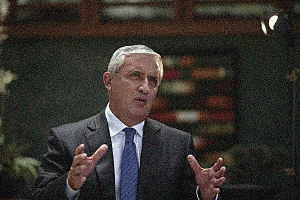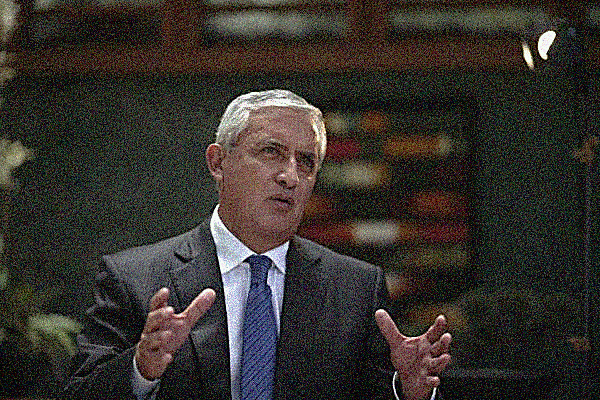
Guatemalan President Otto Pérez Molina
Much has changed, however, since the summit was announced. As President Humala has lurched to the right, Soberón was ousted and replaced with Carmen Macías, a competent drug policy expert – but one who could have been hand-picked by the U.S. Embassy, with whom she had and continues to have an extraordinarily good relationship. The Lima “drug” summit was changed to the “anti-drug” summit on DEVIDA’s web page. The U.S.-backed “war on drugs” was back on track.
However, as ex-officials, officials and even sitting presidents began questioning the existing drug war paradigm, the Peruvian government has become increasingly out of step with regional calls for reform. Even the long-taboo topic of legalization was put on the agenda by Guatemalan President Otto Pérez Molina. At the April 2012 Cartagena summit, the region’s presidents held an unprecedented, closed-door discussion of drug policy, which culminated in an announcement by President Santos tasking the Organization of American States (OAS) with carrying out an evaluation of present policies and exploring alternative policies. Suddenly, the Lima “anti-drug” summit had taken on new meaning as the issue of drug policy reform was put front and center on the regional agenda.
At the same time that the Lima summit is underway, a debate will take place on June 26 in the UN General Assembly, entitled Drugs and Crime as a Threat to Development. Both of these debates are intended to coincide with the UN International Day Against Drug Abuse and Illicit Trafficking, on June 26. The agendas for both of these meetings reveal a concerted effort to contain the debate that was formally launched at the Cartagena summit.
Yet that debate will likely take place regardless. And as much as the United States and other countries would like such debate to take place within the boundaries determined by the existing drug control conventions – as U.S. officials constantly assert – some countries do not appear willing to abide by such dictates. Guatemala is sending its foreign minister to the UN in New York rather than Lima, noting its overall dissatisfaction with the summit. Most significantly, just days before the summit, the Uruguayan government unveiled a plan to create legal, state-controlled, regulated markets for cannabis. The plan makes sense for government officials seeking to remove the profits and criminality from drug traffickers, improve citizen security, and focus its efforts on the use of more dangerous drugs.
The June 21 issue of the Lima weekly, Caretas, reported that “legalization of cannabis will not be part of the debate.” But can Peruvian government officials be so sure of that? As stated in a previous FPIF blog, as a result of the April 2012 Cartagena Summit, the genie’s out of the bottle and will be very hard to put back in, as much as “drug war” zealots might try.
Coletta A. Youngers is an Associate with the International Drug Policy Consortium (IDPC) and a Senior Fellow at the Washington Office on Latin America (WOLA).

